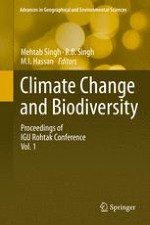2014 | OriginalPaper | Chapter
9. Carbon Sequestration in Soils of Different Land Use System in Sirsi Taluka of Uttara Kannada District Through Geo-Informatics Approach
Authors : A. G. Koppad, Pavan Tikhile
Published in: Climate Change and Biodiversity
Publisher: Springer Japan
Activate our intelligent search to find suitable subject content or patents.
Select sections of text to find matching patents with Artificial Intelligence. powered by
Select sections of text to find additional relevant content using AI-assisted search. powered by
